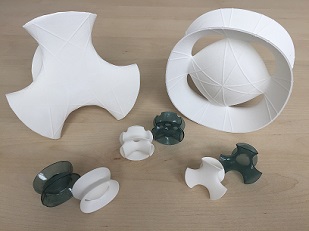Birational maps between varieties
The study of geometric shapes that are almost identical. This project is about classifying geometric objects called “Fano varieties”.

The study of Fano varieties appears in many contexts in pure mathematics, with applications in Geometric Design, Theoretical Physics and beyond. The team leader at Loughborough is Dr Hamid Ahmadinezhad, in collaboration with researchers from the universities of Cambridge and Edinburgh, Imperial College London, MIT, Boston College, the Steklov Institute in Moscow, the IBS centre in Pohang and more.
Geometric shapes defined by algebraic equations are called “varieties”. Familiar examples are the parabola (y=x2) and the sphere (x2+y2+z2=1). Sometimes two varieties can be identified after removing small subsets from them. For example, a sphere without its north pole can be projected to the 2-dimensional plane by a technique called stereographic projection. Identifications like this are called “birational maps”.
Knowing which varieties are birationally mapped into each other is a fundamental question in geometry. Some of the main objects of study in this area are the so-called “Fano varieties”. These are varieties defined by a positivity condition on their curvature, making them higher dimensional relatives of the sphere. Thanks to the work of Caucher Birkar (who won the Fields Medal in 2018), we know there are only finitely many families of Fano varieties of each dimension. However, finding birational maps between these families remains a major challenge. Our project has opened up several novel areas of study in the birational geometry of Fano varieties, building on the major advances of recent decades and inventing some new techniques of our own.